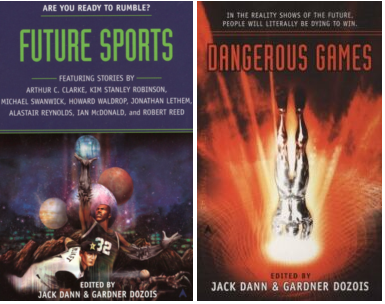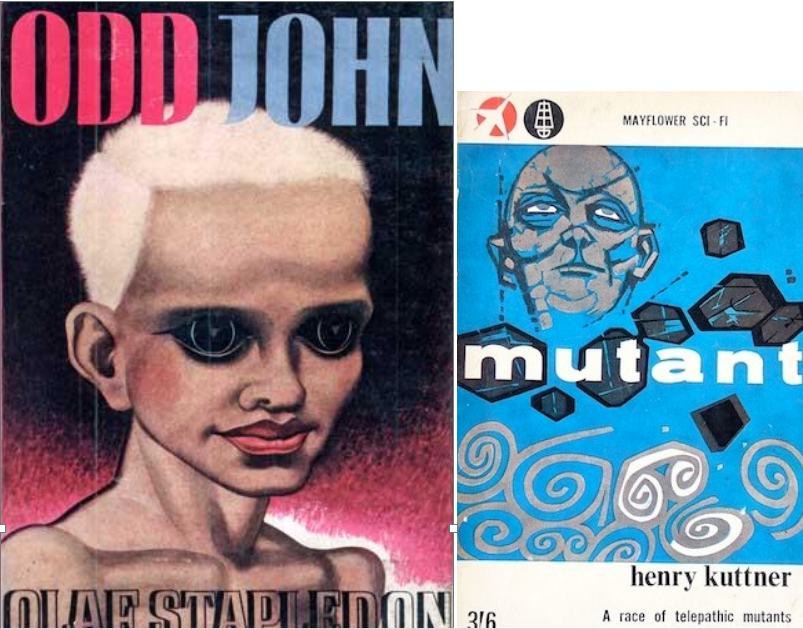
Introducing – Some Big Ideas
When Comic Book Herald EIC (Ed note: and all around genius savant bachelor) Dave Buesing asked me to look into the non-comics sci-fi connections to Jonathan Hickman’s 2019 House of X and Powers of X, I found myself facing a much larger challenge. While the Hickman era of X-Men threads in not a few outside sf tropes and influences, the tapestry itself has already been perpetually in the loom for the past 60 years. And my restless penchant for connecting parts to wholes and present to past wondered: But what sf stories were Stan and Jack reading? Where did the first superman of American comics come from? How did the notion of the born mutant become shorthand in the pulps for the outsider genius or the beautiful freak whose very existence was countercultural?
Obviously, there are endless such questions we could formulate, especially when it comes to the early years of pulp adventure and popular sf*, of which virtually no one but a handful of scholars has ready knowledge. And anyway, what does this have to do with Hickman’s X-Men at this point? Well, if you know his work going back to the start of his comics career, you’re certainly familiar with the fact that he’s always been a nut for high-concept sf; indeed, many of his influences appear to call back quite clearly to Golden Age sf classics (the 1930s and ’40s) and sundry benchmarks in the genre—even if it’s not intentional or a direct citing of specific stories. To be clear, it’s not my intention here to ever presume that any author is plagiarizing. However, I do work off the assumption that even the most astonishing creators aren’t creating ex nihilo: Everything comes from somewhere, but ultimate origins are all but impossible to trace. We are inspired by what’s in our environment, education, and experience, and even the most radical auteurs are so limited. Simply put, what this series of articles will try to track to the best of my current ability is the evolution of those tropes central to the current X-Men narrative from its earliest discernible origins in the primal soup of pulp sf, with an undeniable dash of (warped) Nietzscheanism and necessary historical and cultural context.
*I’m using sf to stand in for both science fiction and speculative fiction, so you can read the abbreviation as whichever poison you prefer—or some overlapping of the two. But wherever we’re looking at something that is better described by one label or the other, I’ll try to use the clearest genre terminology.
In this first article, though, focusing on the evolution of the (super)hero figure in proto and Golden Age sf, all this precedes anyone talking about “speculative fiction.” By the same token, readers of the time were not encountering anything like “hard” science fiction as it emerged later in the 1970s. Instead, the Golden Age spun its gold more out of fervid fantasies than rigorously/convincingly logical extrapolations. (Critically, this periodization of the genre only really describes what was happening in the US. It does not at all apply to Britain, where the “scientific romance” of the late 19th century continued to be predominate into the 1950s and still strongly informs the somber and contemplative variety of British speculative fiction to this day.)
This is meant to be a fun dive into the sf sandbox that both Hickman and the earlier comics creators most relevant to the X-Men’s lineage were playing in to bring us the super-fantastic, uncanny toys we all know and love today.
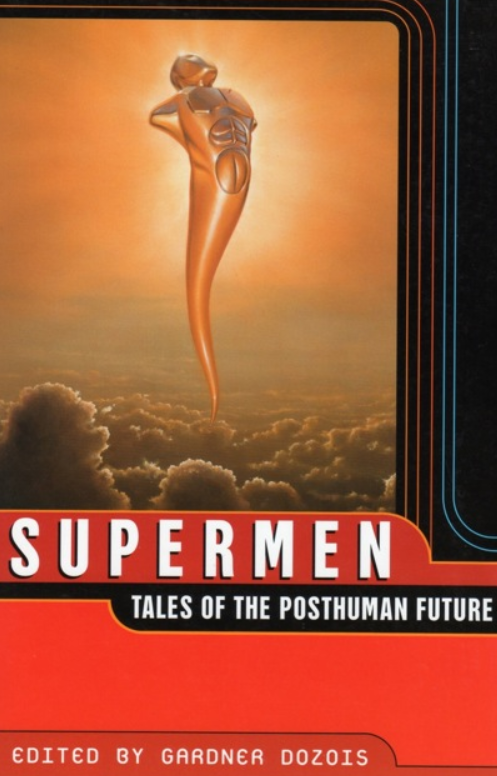
This first piece will end with a list of four key texts for Stan and Jack’s Silver Age X-Men. The next one will delve further into these stories to find the clear connective tissue with Marvel’s merry mutants, but also look at the earlier pulp romances that had enthusiastically adapted ersatz notions from evolutionary biology that had already been discredited by Darwin long before they captured the fervency of popular imagination. Moving on from the Golden Age mutant craze and the last major novels there, we’ll then survey Claremont’s contribution of classic space opera and timeslip tropes.
(While the focus won’t be on Star Wars, given how common that influence is, we’ll certainly look at the sf influences on that franchise, as well, where relevant to Claremont’s inspiration. Before getting to HOX/POX in a final piece, maybe I’ll try to squeeze in two more entries, each on a different major X architect, like Grant Morrison and Mike Carey, and the new or revisionary tropes they brought to bear. Obviously, there are countless more connections to be made between sf in prose and in comics!)
Throughout these pieces, I will be drawing from the most vital and comprehensive encyclopedic resource on speculative fiction, the freely available online Encyclopedia of Science Fiction; there is no greater font of historical analysis and critical insight in the field, looking at themes, authors, and texts from antiquity to today through the endlessly refractive lens of the speculative genres. (Hereafter be abbreviated as the SFE.)
I. Über and Unter – the Supermen and Superfreaks of Yesterday
In creating the X-Men in 1963, Stan Lee and Jack Kirby were using already popular pulp sf tropes to create a light metaphorical vehicle for responding to the antisemitism they had both experienced throughout life, including what they’d seen as servicemembers in WWII Europe. The allegorical nature of Homo superior had to be somewhat indirect, of course, because this was early ’60s America—still very racist and antisemitic. After all, none of the mutants they introduced were even Jewish! (Iceman’s Jewish heritage wouldn’t be established until much later, by Claremont.) Of course, none of this is news. And how the mutant metaphor has worked—or not—across the decades is very familiar territory, as well.
What’s less discussed is, of course, the actual pulp sf sources Lee and Kirby might have been inspired by, specifically regarding superheroes and mutants. While we won’t get into the monster mania that, thanks to the Comics Code Authority and associated censorious culture panics, comics of the early 1960s were basically forced to abandon, we’ll address the monstrous and grotesque in pulp fiction where relevant. Primarily, the various genre influences on 1960s Marvel were from magazines that printed serialized stories that would later end up in book format (if they passed a relatively low bar of popularity). In the late 1950s, though, this standard practice all but disappeared as the book market became dominant in the field. (Granted, I’m simplifying all this for expediency.) So if you see an earlier date of publication for a story that you’re familiar with only as a published novel, that’s why.
A. Super Exceptional Excelsior
Before we lose ourselves in the heyday of the mutant craze, we need to address an earlier mania: superheroes. (Though I acknowledge that mutants as a kind of monster could also be considered antecedent—or really, we could just say that gods and monsters are flipsides of the same human coin and come into the world intimately entangled, beneath all their epic clashing.) The notion that humans can or even will “evolve” into the superhuman (or simply a more civilized and/or intelligent species) by way of some spurious telos (end goal) latent within the mechanics of evolution is entirely magical thinking. And while achieving such ends through applied science might be feasible, the consequences, unintended or not, would surely be disastrous from the perspective of most people today.
Certainly, Nietzsche never dreamt of his racist sister’s ersatz adaptation of his notions of the “will to power” and the “overman” to Nazi ideology, years after his death; for him, neither concept valorized brute force or strength (Kraft). Nietzsche’s dream was one of overcoming the obstacles of one’s ego and the many negative aspects of the ego’s enculturation throughout life (especially in the context of a conservative Christian culture of unquestioning piety and needless suffering, even as it became more ruthlessly capitalist); so, what we’re talking about here is a desire for self-worth and self-love. In contemporary life, you could say Lil Nas X exemplifies this achievement through creative/imaginative/erotic power or might (Macht); his Machtgelüst is manifest even in his name, his mutant name, if you like. In other words, the superhuman is and always will be inherently metaphorical and social; if ever we learn to literalize our dreams of “life power,” of super vitality, it will be through technology. At that point, the fantasy will eat itself and become just another real-world migraine atop the pile of all the other headaches we’ve created for ourselves, a concatenated mess (the Alan Moore insight). Arguably, our fantasies of the Übermensch, of self-overcoming, should (or can) only express themselves metaphorically, creatively, not literally/technologically; after all, Nietzschean affirmation is to accept things for what they are, even as we celebrate our capacity for dangerous energies, through playfulness (Homo ludens rather than truly Homo superior).
And hey, that’s what we turn to things like games and comics for. We’re here to play, to indulge the ludic element vital to our humanity, even as our modern condition as Homo economicus tries to break us, for the benefit of the Owner class. Turn the clock back sixty years, and these are the conditions you’ll find Stan and Jack in too, caught between impossible dreams of power and all-too-real nightmares of hatred and need that no valorization of great responsibility will ever truly ameliorate. (Granted, since then, it’s all become much more amplified and intensified.) But as we take this brief dip in the cultural soup of early sf tropes, we’ll certainly have to examine their uglier manifestations, as well—racist, fascist, Social Darwinist, etc. (Rorschach and Dr. Manhattan are the unavoidable shadows of those we admire.)
Oddly enough, in Jerry Siegel and Joe Shuster’s Superman (developed five years prior to his 1938 debut), avid sf fan Siegel clearly found inspiration in a popular 1930 pulp novel itself grandiosely inspired by watered-down Nietzscheanism—Gladiator by Philip Wylie (also a screenwriter and culture critic). Granted, it was a loose adaptation, and while Siegel did review the book in 1932, we have no direct confirmation that it provided the model for the modern archetypal superhero. In rural Colorado, the fervid crypto-eugenicist Professor Danner concocts and injects his pregnant wife with a serum that results in their newborn Hugo displaying superhuman strength, speed, and imperviousness; he’s raised in a manner similar to Clark Kent, who actually has the same powerset, only gaining further powers over the next few years of publication (and broadcasting). But he was always an alien, unlike Hugo (who was briefly inserted into late 1980s DC series, by Roy Thomas, unsurprisingly!). However, in the book, Hugo’s adulthood is totally different from Clark’s: Returning home from WWI, he unintentionally reveals his inhuman might in saving a man’s life and is thereafter hounded and tormented by the authorities; he next sets his sights on Washington politics but soon walks away in disgust, going instead on a kind of wanderjahr with a group of archaeologists headed to Guatemala, where the brooding Hugo seeks God’s advice only to be killed by a lightning bolt. The moral of the story was that the morally pure young man may have been a godlike superhuman, but his soul could not withstand the iniquity and savagery of the ordinary run of mankind. This kind of misanthropic pessimism was much more characteristic of the scientific romance genre pioneered in the UK, a dourness that persists, however much with its own charms, a relief from the energetic self-aggrandizements of American “hard” sf.
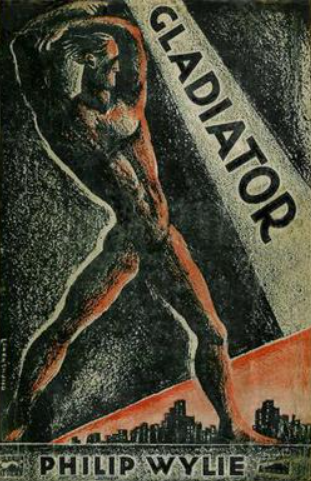
In the US, physical vigor and fitness were valorized as if they were the pinnacle of a young, bullish culture on the move, shaking off the chains of tradition—albeit with an often white-bread po-faced stoicism.
After all, Clark Kent weathers the worst humanity has to offer and, like a pure American soul, an immigrant perfectly assimilated and passing without a second glance, he always, always, always remains unruffled, pleasant, and humble—an idealized version of America that never intersected with lived reality. His secret isn’t darkness or savagery but a greater nobility, a human divinity (neither alienated nor meaningfully alien, discounting later interpretations).
Clark Kent’s name was itself clearly inspired by a much more simplistic pulp icon with his own magazine, Doc (Clark) Savage, the “Man of Bronze,” himself named after Clark Gable and Richard Henry Savage, famous in late 19th century America as a writer of melodramatic adventures based on his own experiences as an avid military adventurer around the world, in the service of America’s growing imperial ambitions. So, way back in the day, US pop culture had a very restricted, almost inbred, pool of acceptable influences.
(Notably, several major Golden Age sf novelists wrote early Superman: Alfred Bester, Edmond Hamilton, Henry Kuttner, and Manly Wade Wellman. And Kuttner’s mutant “Baldy” stories were a likely influence on the creation of Professor X.)
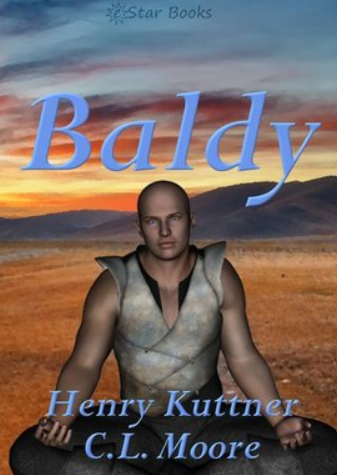
Of course, many Big Two comics fans know that the radical change Stan Lee and Jack Kirby brought to superheroics in the early 1960s was a more down-to-earth relatability, whereas DC continued to focus on the adventures of godlike or extremely rich and super-intelligent heroes who were completely removed from the concerns of everyday life. Already, the 1940s had seen an explosion of superhero fever across America—in all popular media, rapidly moving out of the domain of “men’s adventures” into family fun and role-modeling for young boys. Stan and Jack’s genius was in bringing adolescent and adult themes back and with wild energy, with Steve Ditko bringing a manic intensity to the most popular young hero at Marvel, Spider-Man. Peter Parker’s heroic fate didn’t stem from eugenic birthright or darkly masculinist decision (vengeance); rather, like the outsized pangs of adolescence itself, his puissance was foisted upon him. Learning better was simply analogous to becoming a responsible young man.
On the heels of the Fantastic Four and Spidey came the X-Men in 1963, which was not a stunning success like the aforementioned properties. But as the X franchise eventually exfoliated into a universe unto itself under Chris Claremont stewardship, it not only revitalized the trope of the born mutant as never before—and many decades after its almost complete disappearance from genre sf—it delved into virtually all sf tropes with a thoroughness that few other major comics franchises have seen at any time up until the present day.
But returning to the sf origins of the superhuman mutant, let’s now look at the ideological exceptionalism that kept the ancient Western archetype of the mythic hero persona non grata into the Industrial Age United States—unless he was properly assimilated (pared down) to individualist ingenuity.
B. Prometheus: The American and Unamerican Varieties
Prometheus was an altruist, the Titan who selflessly risked his eternal life to steal the heavens’ fire for human self-betterment. Now, he lives out eternity bound to a rock, his liver devoured by an eagle and then regenerating every day, forever. But various traditions also saw him as humanity’s creator, a demiurge molding the first of us out of clay; thus, at the dawn of the Age of Science, Victor Frankenstein was seen by his author as “The Modern Prometheus,” the subtitle of Mary Shelley’s 1818 classic. The Greek name translates as “forethought,” a celebration of pragmatic intelligence, which especially 100 years later was certainly integral to the self-conception of Industrial Age America, with its technological wunderkind (personified, then, by Edison) and its industrial titans. And whether interpreted as an altruist or individualist, he is fundamentally a trickster.
Now, it’s worth noting that in the Hickman era, we explicitly have the Sentinels framed as Promethean, according to the Mother Mold’s dying speech in House of X #4: they have stolen the singular fire of, presumably, sentience and will from their human creators. (Granted, “her” analogy is a bit confused.) But whatever the moral polarity of the machines (which, really, is unclear at this point), Orchis and Krakoa are both in their own ways altruistic Prometheans (though the human faction’s version of altruism is much more and violently restricted/tribalistic).
Stepping back to the primal pulp origins of what would become first the human mutate (like the FF, Spidey, the Hulk, etc.—even the Flash, except for copyright reasons, of course) and then the born mutant, between the introduction of the godlike Superman and the psi-powered mutant Charles Xavier, we have the likes of Reed Richards—or the ultimate scientific Promethean of superhero comics. And critically, Mr. Fantastic is not an individualist who reaps the accolades of his intellectual successes as would the classic pulp hero of the Edisonade, which is the term the SFE uses to categorize a now moribund subgenre that featured youthful American men or preteen boys, cleverly inventing and/or logicizing their way out of unlikely perils, with not just their own fate at stake but that of their nation (however narrowly/poorly imagined) as well. Modern takes on this extinct story mode can be found throughout the steampunk genre, which often lampoons to varying degrees the genius DIY inventor-hero. There’s also boy inventor Jack B. Quick from Alan Moore’s Tomorrow Stories and the grand metacritique of Thomas Pynchon’s Against the Day (2008).
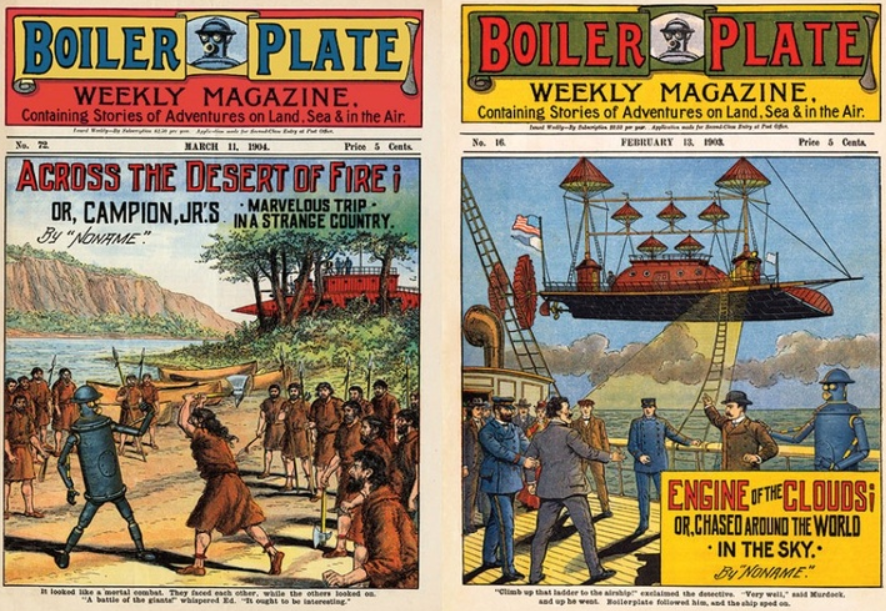
Stan Lee and Jack Kirby, however, took the Edisonian hero and glued him inextricably into a family unit that is fundamentally set against self-aggrandizement, regardless of each member’s egoistic foibles.
Yet, according to the SFE, a “soured” form of the Edisonade has survived into the present and was indeed quite prominent in the mid-20th century. But without the Edisonade’s original “innocence”—essentially, that naïve exuberance for telling clearly illogical adventures whose celebration of scientific rationality was all very hand-wavy—what readers of peak Golden Age science fiction and the later hard sf varieties got instead was the Heinleinian “Competent Man,” who could mansplain everything, really let you know it, and tell you that was the way of true great (all-American) men. In other words, the wonderment suffusing the early pulps over the potentials of an age of super-science and wild invention turned decades later into ideological advocacy for the ascendent rationalistic imperium of white eugenicist America. This sort of figure increasingly melded a narrow scientism with a fetishism for the militaristic (e.g., Robert Heinlein’s Starship Troopers in 1959—the height of American military sf as the fascistic boot of the future forever stomping on an alien, i.e., unamerican/communist/foreign, face).
(While not Edisonades, but more just pulp adventures, the likes of Edgar Rice Burroughs (as in Barsoom) were read for their innocent adventurism, not any kind of explicit ideology. Early space operas fit here, too, starting with E.E. “Doc” Smith and Edmond Hamilton in the 1920s and ’30s.)
Fantastically, the very comic-bookish nature of Mr. Fantastic and his four-color ilk saved themselves from this dreadfully wooden and overbearing (read: Heinleinian) fate. In other words, we can skip over Heinlein—hurrah! (If only Reed were more of a lovable trickster; however, that aspect of Prometheanism is refracted, in very different ways, through Johnny Storm and Victor Von Doom.)
As the old-school Edisonian hero is only another early stage in the evolution of superheroism (though obviously still relevant to any writer of the Fantastic Four, Iron Man, Lex Luthor, etc.), we can now turn to the second place in sf history (after the aforementioned Gladiator) where prose and comics really diverged.
Indeed, it’s time to talk genetically “elite” mutants with psi powers and super smarts!
C. For a World That Hates and Fears Them
In fact, the prose magazines did continue the tradition of the heroic superhuman throughout the 1940s and ’50s, and yet even as the trope died out there, especially in the latter decade’s shift to the paperback market, this era set the archetypes for modern adventure protagonists, whatever their stylized self-consciousness or relative complexity. Indeed, it seems no accident that Joseph Campbell’s The Hero with a Thousand Faces was published in 1949, at the height of this pop culture craze (before Anglo-America really began to question itself).
But the height of the superhuman hero in Golden Age prose sf was oddly enough, perhaps even by design, never going to have the broadest cultural appeal—as in beyond feverish white incel boys. Now granted, 1940’s “Slan” by A.E. van Vogt, published as a novel in 1946, was an instant hit with Golden Age readers, and it remains one of the most famous sf texts from that era.
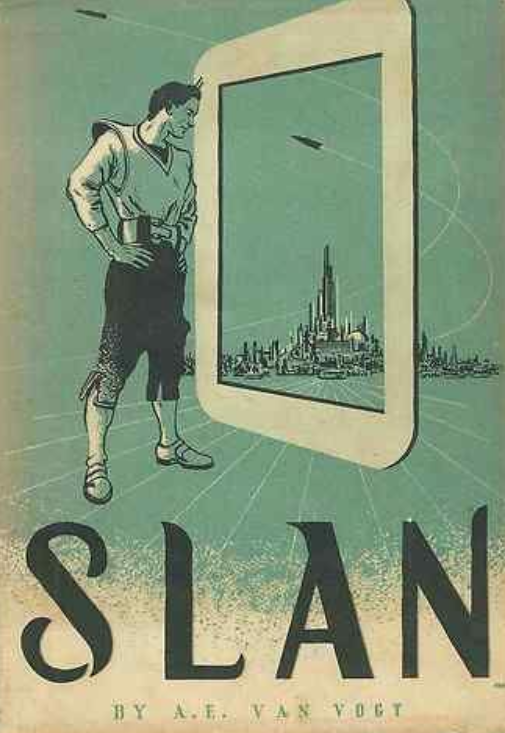
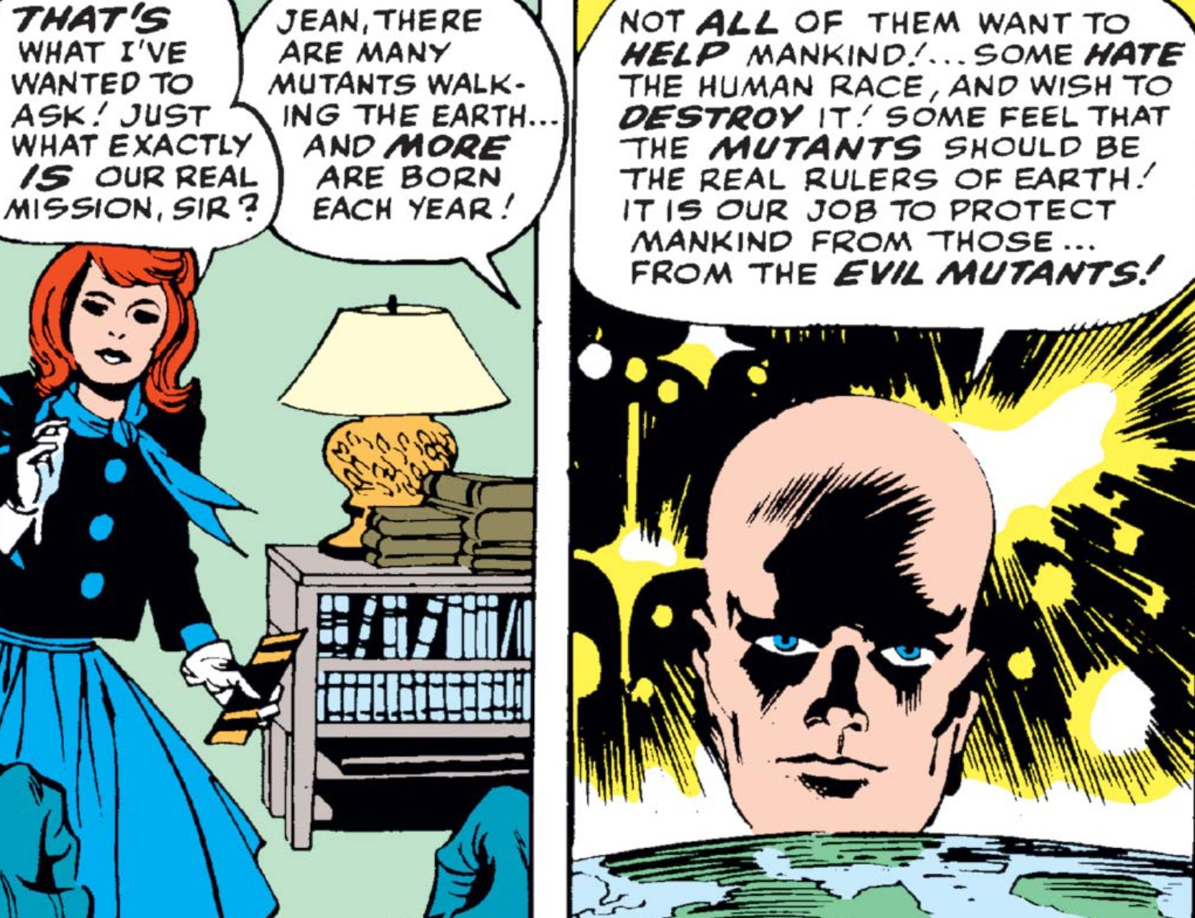
All the Children of the Atom
We’ll expand on this story and its themes only a little bit further in the next piece, but of greater relevance will be a much more welcoming story for modern readers, Children of the Atom by Wilmar Shiras (1953), composed of three earlier published novellas, the first of which, 1948’s “In Hiding,” was a direct influence on Stan Lee and Jack Kirby’s X-Men.
It is truly remarkable, though, that very few of us know that the immediate Ur text for the OG X-Men was written by a woman (which may have been easy to overlook at the time given that Wilmar, despite not being her penname, is definitely a historically male gendered name).
For now, we’ll leave off with brief mention of two other “mutant” texts that are much less well known today but were likely influential on the X-Men as well, at least indirectly. We’ll touch on these, as well, next time. In fact, Olaf Stapledon’s Odd John (1935) probably influenced Wilmar Shiras’ Children of the Atom. More in the pulp tradition is Mutant (1953), collecting the “Baldy” tales of Henry Kuttner and C. L. Moore.
Next time, we’ll look more closely at these and a variety of beings irradiated into superhumanity or monstrosity (like in John Wyndham’s 1950s UK classics The Chrysalids and The Midwich Cuckoos), before turning to Claremont’s adventures through space and time.
The post Science Fiction & The X-Men, Part 1: The Golden Age Origins of Marvel’s Heroes & Mutants appeared first on Comic Book Herald.

